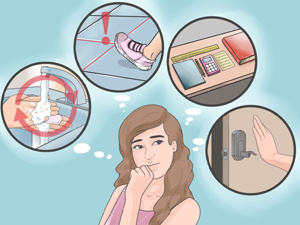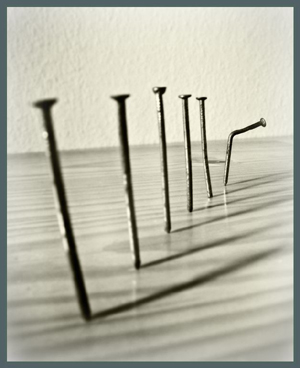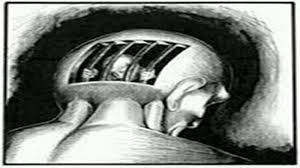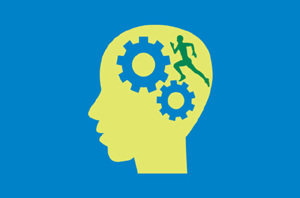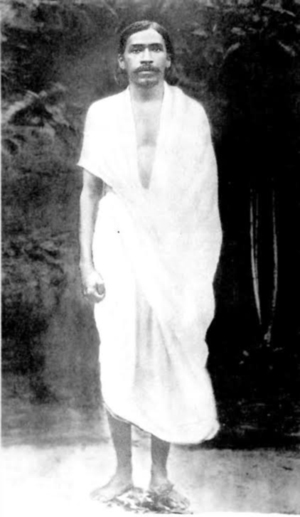Notes on counselling
Perfection — shifting nuances
Abstract
Perfection can shift its stance from blind automatism that facilitates OCD (Obsessive compulsive disorder) to the spontaneous remoulding of the physical substrate at higher echelons of consciousness thus newer counselling techniques are needed to follow this trajectory.
Perfection seems to be an enigma to counsellors — I learnt it the hard way. I was dealing with perfectionist traits of subjects with Obsessive Compulsive Disorder (OCD), where the strenuous effort to perform the same task repeatedly so that there can be no imperfection was so bothersome — a repetition that aroused intense anguish, suffering and disdain! Moreover, OCD seems to be a therapist’s ordeal for the subject may not fully respond to drugs and poorly respond to ordinary counselling techniques unless special behavioural therapies are tried, but even then there is every chance of relapse. In frustration, therapists sometimes recommend psychosurgery though such therapy still remains underused.
A few hours later I was deliberating a session on personal growth from a psycho-spiritual perspective. I was explaining how Mahasarasvati could be invoked through perfection and Mahalakshmi through harmony as explained by Sri Aurobindo. I was quoting profusely from Sri Aurobindo to bring home the point how the Mahasarasvati power supported a perfect perfection in a matrix of a thousand imperfections:
“Mahasaraswati presides over... detail of organisation and execution, relation of parts and effective combination of forces and unfailing exactitude of result and fulfilment. The science and craft and technique of things are Mahasaraswati’s province… her action is laborious and minute and often seems to our impatience slow and interminable, but it is persistent, integral and flawless…. Nothing is too small or apparently trivial for her attention; nothing however impalpable or disguised or latent can escape her. Moulding and remoulding she labours each part till it has attained its true form, is put in its exact place in the whole and fulfils its precise purpose…. Carelessness and negligence and indolence she abhors; all scamped and hasty and shuffling work, all clumsiness and a peu pres and misfire, all false adaptation and misuse of instruments and faculties and leaving of things undone or half done is offensive and foreign to her temper. When her work is finished, nothing has been forgotten, no part has been misplaced or omitted or left in a faulty condition; all is solid, accurate, complete, admirable. Nothing short of a perfect perfection satisfies her and she is ready to face an eternity of toil if that is needed for the fullness of her creation. Therefore of all the Mother’s powers she is the most long-suffering with man and his thousand imperfections (1).”
As I finished and tried to look knowledgeable, an anti-climax occurred! An elderly gentleman, who had earlier suffered anticipatory anxiety and depression and had perfectionist traits ,accosted me and asked why then I saw problems with the perfectionist zeal of obsessive subjects. This was a really interesting query!
The repetitive behavioural habit in OCD to seek an elusive perfection or compulsion to repeat the same act as one believes that one is always imperfect or the perfection is not sustainable, is not the same as the perfection viewed from a spiritual gestalt.
The Perfectionist urge in OCD
In terms of consciousness as explained by Sri Aurobindo, it is the physical mind that is involved in OCD. This is the portion of the mind that is sustained by our sensory schemata and is classically the habitual mind that goes about harping on the trivial and stereotyped issues of daily life. It does not deal with lofty ideas or dynamic issues but goes on automatically harping on unimportant details. This is not surprising as the physical mind is closest to Matter and Matter itself is marked by automatism that is classically portrayed in the automatic rotation of electrons in their orbit! One shudders to think what can happen if that perfect automatic rotation of electrons suddenly stops. The world would have collapsed!
It is only recently that the principle of automaticity is being acknowledged as an alternative etiology for habitual behaviours that cannot be satisfactorily explained by resurgence of repressed material. Sri Aurobindo dwelt on it long back in The Life Divine (serialised between 1914 to 1919) and explained how evolution begins with a blind ‘automatism of Matter’, resulting in an obscure harmony of a stereotyped existence. “The evolution begins with the automatism of Matter and of a lower life in which all obeys implicitly the drive of Nature, fulfils mechanically its law of being and therefore succeeds in maintain a harmony of its limited type of existence and action…. (2)”
Elsewhere, Sri Aurobindo describes two types of automatism:
i. a blind automatism
ii. a trained and developed automatism
The blind automatism was a mechanical movement where the mind-principle did not intervene. It was “a kind of automatism carrying on its work in the physical plane without any intervention of the mind and in parts even beyond any possibility of direct observation by the mind or, if conscious or observable, still proceeding or capable of continuing, when once started, by an apparently mechanical action not needing direction by the mind and continuing so long as the mind does not intervene (3).”
It is interesting to note that in recent times there has been a sea-change in the approach to understanding OCD. Instead of the old psychoanalytic explanations, focus is now shifting to neurological circuits in the brain. Neuro-imaging evidence is pointing to the involvement of lateral and medial orbitofrontal cortices, the dorsal anterior cingulate cortex and amygdalo cortical circuitry along with cortico-striatal circuitry in the pathogenesis of OCD. This approach gives full credence to Sri Aurobindo’s scientific approach to his integral model of Consciousness, where the physical mind which supports the neuronal circuitry, is the matrix that supports the blind automatism of physical consciousness without necessarily the intervention of the cognitive principle.
This involvement of the physical mind in OCD explains why psychoanalytic and other related depth therapies are not as effective in that realm as behavioural and cognitive-behavioural therapies. The pursuit of perfection in OCD is a habitual and automatic behaviour that is strenuous and exhausting and drains away all energies. It is not pursued for the joy of perfection but for the compelling and tremendous insecurity associated with the repetition.
Perfection in a spiritual gestalt
In the spiritual gestalt, perfection is a dynamic value that shifts its nuances as one progresses through hierarchies of consciousness, whereas in OCD one comes back again and again to the same stereotyped perfection. In a spiritual perspective, there is a change in the denouement at every plane of consciousness so that one comes back not to the same organisation of perfection but every time to a new integer. Every time one has to start from a new denouement. Every time one has to start from a new height of perfection that surpasses the previous equation.
The Mother remarked that one could progress very far on the path of perfection if at every moment one could live to the utmost that one could be (4). That automatically implies that at the next moment, one could live at a yet higher mode and therefore the denouement of perfection can change from moment to moment as one progresses in consciousness. In other words, what was perfection in one sphere yesterday has to be surpassed today in consonance with the progress in consciousness is in accordance to the Zeitgeist or Time-Spirit. And naturally, unlike the case in OCD, perfection does not remain focused on the physical plane alone but has to be successively or simultaneously expressed at diverse planes of the consciousness, that ranges from the physical plane and traverses the vital to reach the mental plane and also traverses the depths of consciousness, by moving from the outer being to the inner being and from there to the soul-space that leads to the inmost being or psychic being.
In that sojourn, one can reach the heights of consciousness that leads to the Great Void where one is no longer bothered about perfection. Or else one can reach the psychic being or soul-principle where the most perfect peak-moments of life, perfect in terms of intensity and unalloyed joy and in terms of embodying a divine element, are preserved.
These moments of perfection are preserved to outlast the life-span of an individual and remain as memory templates in the cosmic consciousness to influence future lives. These perfect soul-moments lead us to immortality.
A reappraisal of the physical mind
The limitations of the physical mind that even binds perfection in stereotyped patterns instead of progressing have been known since antiquity. Long before the behavioural psychologists began their exploration with interventional techniques, the spiritual seekers of nearly all major traditions in the world recognized that the pursuit of habitual thinking and elusive perfection was a hindrance to contemplation and inner search. That is how the japa was introduced, which included the repetition of a sacred name or mantra, often with the help of rosary beads, so that instead of ruminating on habitual ideas one could perfect oneself by repeating the name of the Lord!
A greater destiny awaits the physical mind. In Sri Aurobindo’s yoga of transformation, the physical mind cannot be left out. In fact it holds the key to physical transformation. The physical mind has to receive the Light of progress before other parts of the being start to respond. It has to be transformed first before the intellectual mind and even the vital mind are transformed. Unless the physical mind is worked upon, the consolidation of the forces of transformation cannot occur.
From blind automatism to conscious automatism
In Sri Aurobindo’s transformational trajectory, the evolution of consciousness facilitates the shifting from the blind servitude to Matter’s laws to the spontaneous remoulding of the physical substrate at higher echelons of consciousness. The phenomenon of automatism per se can change in denouement from a blind action tied to nature’s laws to a spontaneous and free action designating instrumental mastery. The evolutionary movement that started from a blind automatism of Matter can culminate into an automatic self-fulfilling plenitude.
Indeed, the evolution that started with a blind automatism of Matter “proceeds through the pregnant confusion of the mind and life of a humanity driven by this inferior Nature but struggling to escape from her limitations, to master and drive and use her; it emerges into a greater spontaneous harmony and automatic self-fulfilling action founded on the spiritual Truth of things. In this higher state the consciousness will see that Truth and follow the line of its energies with full knowledge, with a strong participation and instrumental mastery, a complete delight in action and existence. There will be a luminous and enjoyed perfection of unity with all instead of a blind and suffered subjection of the individual to the universal, and at every moment the action of the universal in the individual and the individual in the universal will be enlightened and governed by the rule of the transcendent Supernature (5).”
This shift from the blind automatism that leads to disorders like OCD, to a conscious automatism that leads to Mahasarasvati’s perfection, necessitates a lifting of the consciousness from the physical mind to the higher echelons of consciousness that holds supra-rational faculties like intuition. For that, it is needed to rise above the physical mind to the mental being, the Puruṣa, described in the Upaniṣad as leader of the life and body. “If the mind can take up and control the instincts and automatisms of the life-energy and the subtle physical consciousness and the body, if it can enter into them, consciously use and, as we may say, fully mentalise their instinctive or spontaneous action, the perfection of these energies, their action too become more conscious and more aware of themselves and more perfect. But it is necessary for the mind too to grow in perfection and this it can do best when it depends less on the fallible intellect of physical mind, when it is not limited even by the more orderly and accurate working of the reason and can grow in intuition and acquire a wider, deeper and closer seeing and the more luminous drive of energy of a higher intuitive will. Even within the limits of its present evolution it is difficult to measure the degree to which the mind is able to extend its control or its use of the body’s powers and capacities and when the mind rises to higher powers still and pushes back its human boundaries, it becomes impossible to fix any limits: even, in certain realisations, an intervention by the will in the automatic working of the bodily organs seem to become possible (6).”
This implies a shift from the blind automatism at the level of the physical mind to a mastery of the mental Puruṣa which facilitates a Will-power that can intervene in the physical consciousness without the participation of the cognitive mind. Eventually, at a very high transformed consciousness, this intervention can change the automatic working of the bodily organs to conscious centres of energy and power.
This opens up another new counselling field. Counsellors should develop newer and more dynamic techniques where one can shift from the stereotyped perfection of the physical mind to the dynamic open-ended perfection of the spiritual gestalt. Healing per se would then be a gateway to personal growth.
References
1. Sri Aurobindo. The Complete Works of Sri Aurobindo, Volume 32. Pondicherry; Sri Aurobindo Ashram Trust; 2012, pp. 22-23.
2. Sri Aurobindo. CWSA, Volume 22; 2005, p. 962.
3. Sri Aurobindo. CWSA, Volume 13; 2005, p. 529.
4. The Mother. The Collected Works of the Mother. Volume 9. Pondicherry: Sri Aurobindo Ashram Trust; 1977, p. 97.
5. Sri Aurobindo. CWSA, Volume 22; p. 962.
6. Sri Aurobindo. CWSA. Volume 13; p. 530.
Dr. Soumitra Basu, a practising psychiatrist and member of SAIIIHR, is the Director of a school of psychology, Integral Yoga Psychology. He is also one of the editors of NAMAH.
Share with us (Comments,contributions,opinions)
When reproducing this feature, please credit NAMAH,and give the byline. Please send us cuttings.

